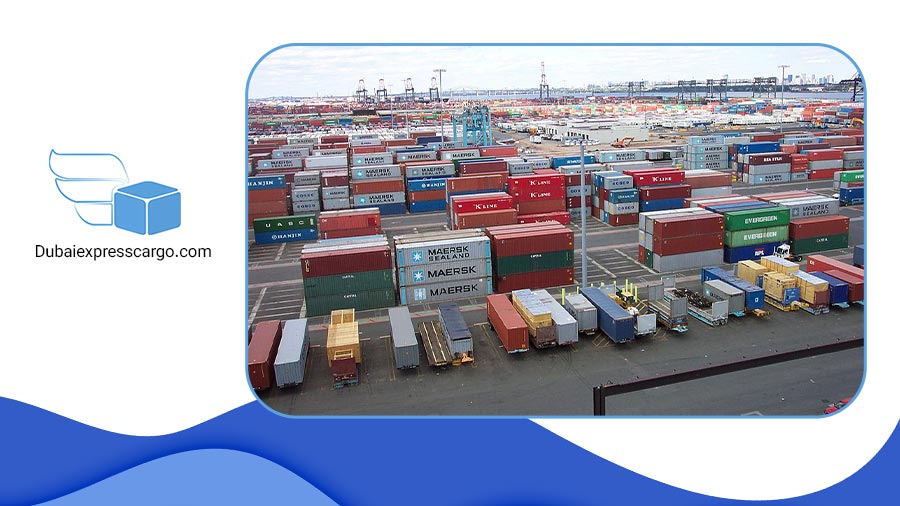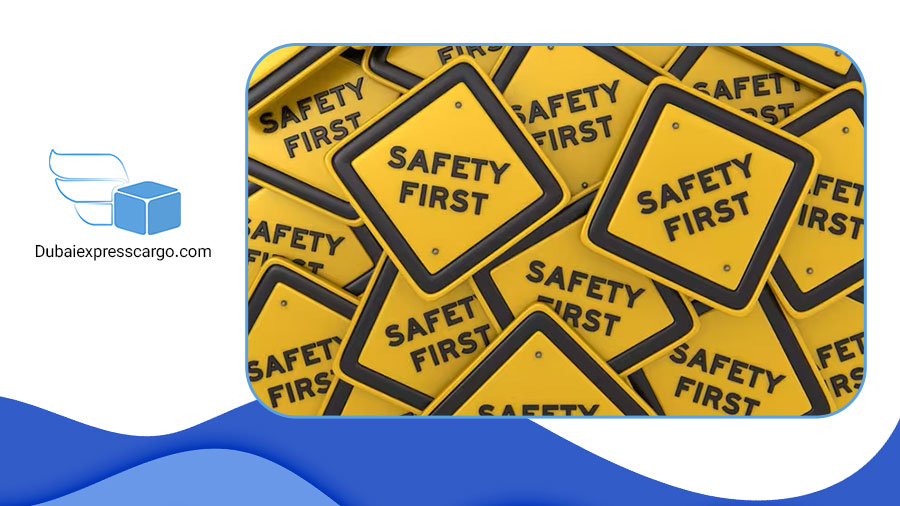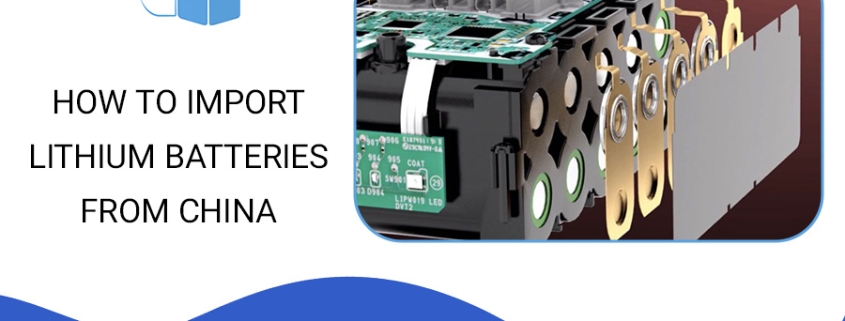How to Import lithium batteries from China
Lithium batteries have become an indispensable component in today’s tech-driven world, powering everything from smartphones and laptops to electric vehicles and energy storage systems.
With this growing demand, China has emerged as a leading supplier of lithium batteries, offering a vast array of options at competitive prices. However, importing lithium batteries from China can be complex, requiring careful consideration of regulations, safety precautions, and logistics.
Contents
The Rise of Lithium Batteries and China’s Prominence

Lithium batteries have revolutionized how we store and utilize energy, providing high energy density, long cycle life, and portability. As the demand for these batteries surges, China has established itself as a dominant player in the global lithium battery market.
With its extensive manufacturing capabilities, abundant raw materials, and cost-effective production, China has become a major source of lithium batteries, catering to a wide range of industries.
Demystifying Lithium Battery Import Regulations

Due to their potential fire and explosion hazards, lithium batteries are classified as dangerous goods under the United Nations (UN) Recommendations on the Transport of Dangerous Goods – Model Regulations.
This classification ensures that lithium batteries are handled and transported with the utmost care to minimize risks.
Air Transportation Regulations
When shipping lithium batteries by air, they must comply with the International Air Transport Association’s (IATA) Dangerous Goods Regulations (DGR). These regulations are more stringent than the UN Model Regulations and restrict the carriage of certain types of lithium batteries on passenger flights.
Sea Transportation Regulations
For maritime transport of lithium batteries, the International Maritime Organization’s (IMO) International Maritime Dangerous Goods (IMDG) Code applies.
These regulations cover packaging, marking, labeling, documentation, and stowage requirements for lithium batteries in cargo ships.
Courier Transportation Regulations
Courier services like DHL, FedEx, and UPS have specific regulations for handling and transporting lithium batteries.
These regulations may vary depending on the courier company and the destination country.
Adhering to Regulations for Safety and Compliance
Understanding and adhering to the applicable regulations for air, sea, and courier transportation of lithium batteries is crucial for ensuring safety and compliance.
Failure to comply with these regulations can result in delays, fines, or even confiscation of the batteries.
Key Considerations for Compliance
- Packaging: Lithium batteries must be packaged in certified UN or IATA-approved packaging that meets the specific requirements for the chosen mode of transport.
- Marking: Clear and visible markings indicating the presence of lithium batteries and their hazardous nature should be applied to the outer packaging.
- Documentation: Accurate and up-to-date documentation, including shipping documents, hazardous material documentation, and shipper’s declarations, is essential.
- Personnel Training: Only authorized and trained personnel should handle lithium batteries during packaging, loading, and unloading.
- Safety Precautions: Proper ventilation, fire protection measures, and temperature control should be in place throughout the import process.
Essential Steps for a Smooth Import Process

To ensure a smooth and successful import process, several key steps must be taken, starting with careful supplier selection:
Supplier Selection
- Conduct thorough research: Identify reputable and reliable lithium battery suppliers in China through online directories, industry publications, and trade associations.
- Assess certifications: Verify that potential suppliers possess relevant certifications like ISO 9001 and ISO 14001, indicating their commitment to quality and environmental standards.
- Evaluate production capabilities: Assess suppliers’ production facilities, ensuring they comply with international safety standards and have adequate capacity to meet your requirements.
- Scrutinize quality control measures: Evaluate suppliers’ quality control procedures to ensure they consistently produce high-quality batteries.
- Request samples and test results: Request battery samples and test results from shortlisted suppliers to verify their performance and safety standards.
Proper Packaging for Safe Transport
When importing lithium batteries from China, it is crucial to ensure they are packed in certified UN or IATA-approved packaging. This specialized packaging is designed to withstand the rigors of transportation and prevent accidental damage or short circuits that could lead to fires or explosions.
Related Article: WHAT’S THE CHEAPEST WAY OF SHIPPING LARGE PACKAGES?
Marking for Clear Identification
The outer packaging of the lithium batteries must be clearly marked to indicate the presence of hazardous materials.
These markings should include:
- UN/ID number: A unique identifier assigned to the specific type of lithium battery
- Battery type: Specifies the type of lithium battery, such as lithium-ion or lithium-metal
- Handling instructions: Provides clear guidance on how to handle the batteries safely
Importance of Adherence
Adhering to proper packaging and marking requirements is essential for several reasons:
- Safety: Proper packaging and marking minimize the risk of fires or explosions during transportation.
- Compliance: Failure to comply with regulations can lead to delays, fines, or even confiscation of the batteries.
- Responsible Import Practices: Proper packaging and marking demonstrate responsible import practices and protect the environment.
Shipping Options and Considerations

Air Freight: Speed and Security
- Pros:
- Fastest transit time, ideal for urgent shipments
- Stricter safety regulations and handling procedures
- Cons:
- Most expensive shipping option
- Subject to tighter restrictions on battery type and quantity
Sea Freight: Cost-Effective for Bulk
- Pros:
- The most cost-effective option for large shipments
- More relaxed regulations on battery type and quantity
- Cons:
- Longest transit time, unsuitable for time-sensitive shipments
- Requires careful packaging to withstand long sea voyages
Courier Services: Convenience and Reliability
- Pros:
- Convenient door-to-door service
- Reliable and well-established courier networks
- Cons:
- Limited capacity for large shipments
- May have specific restrictions on lithium battery imports
Factors to Consider:
- Transit Time: Evaluate the urgency of your shipment and choose the option that aligns with your desired delivery time frame.
- Cost: Consider your budget and choose the most cost-effective option for your shipment size.
- Regulations: Ensure the chosen shipping method complies with the applicable regulations for the air, sea, or courier transportation of lithium batteries.
- Packaging Requirements: Verify that the packaging is compatible with the chosen shipping method.
Import Documentation and Procedures

Preparing accurate and up-to-date customs declarations is crucial in importing lithium batteries from China. These declarations provide detailed information about the batteries, ensuring they comply with import regulations and are accurately assessed for customs duties and taxes.
Essential Customs Declaration Elements
- Battery Type: Specify the type of lithium battery, such as lithium-ion or lithium metal.
- Quantity: Accurately declare the total number of lithium batteries being imported.
- Value: Declare the accurate value of the lithium batteries.
- Intended Use: Clearly state the intended use of the lithium batteries.
- Destination: Specify the final destination of the lithium batteries.
Product Approvals and Certificates of Origin
In certain cases, importing lithium batteries may require product approvals or certifications from the importing country’s regulatory authorities. These approvals verify that the batteries meet safety and performance standards.
Additionally, a certificate of origin is often required to document the country of origin of the lithium batteries.
Import Procedures and Customs Requirements
Each country has its own specific import procedures and customs requirements for lithium batteries. It is essential to thoroughly understand these requirements to avoid delays, fines, or even confiscation of the batteries.
Key Import Considerations
- Customs Classification: Verify the correct customs classification code for lithium batteries under the Harmonized Tariff Schedule (HTS).
- Import Licenses or Permits: Determine if any import licenses or permits are required for lithium batteries.
- Duty and Tax Rates: Understand lithium batteries’ applicable duty and tax rates.
- Documentation Requirements: Review the specific documentation requirements for importing lithium batteries.
Safety Precautions and Handling Practices

Qualified Personnel
Due to the potential hazards associated with lithium batteries, it is crucial to employ qualified and trained personnel to handle them throughout the import process.
These individuals should thoroughly understand lithium battery safety procedures and be equipped with the proper protective equipment.
Proper Ventilation
Lithium batteries can emit flammable gases, so ensuring adequate ventilation during packaging, loading, unloading, and storage is essential. Proper ventilation helps to dissipate these gases and minimize the risk of fire or explosion.
Fire Protection Measures
In addition to proper ventilation, implement appropriate fire protection measures to minimize fire risk. This includes having readily accessible fire extinguishers, sprinkler systems, and fire alarms in place.
Temperature Control
Lithium batteries are sensitive to temperature extremes. Maintaining temperature control throughout the import process is crucial to prevent battery damage, which could lead to safety hazards.
This may involve using specialized insulated packaging and monitoring temperature conditions during transit.
Additional Safety Practices
- Short Circuit Prevention: Take precautions to prevent short circuits, which can cause overheating and fires.
- Damage Prevention: Handle batteries carefully to avoid physical damage, which could lead to leaks or internal short circuits.
- Emergency Procedures: Develop and implement emergency procedures for responding to lithium battery fires or explosions.
Conclusion
Importing lithium batteries from China can be complex, but it can be accomplished by following the guidelines outlined in this article.
By carefully following all the steps we discussed, you can ensure a smooth and compliant import process, minimize risks, and ensure the safe arrival of your lithium batteries.
If you are looking for the easiest way to Import lithium batteries from China to any destination, working with Dubai Express Cargo is the solution. Contact us and consult with our experts.




Leave a Reply
Want to join the discussion?Feel free to contribute!